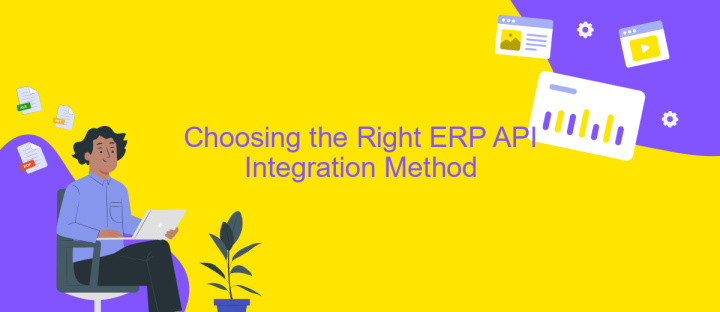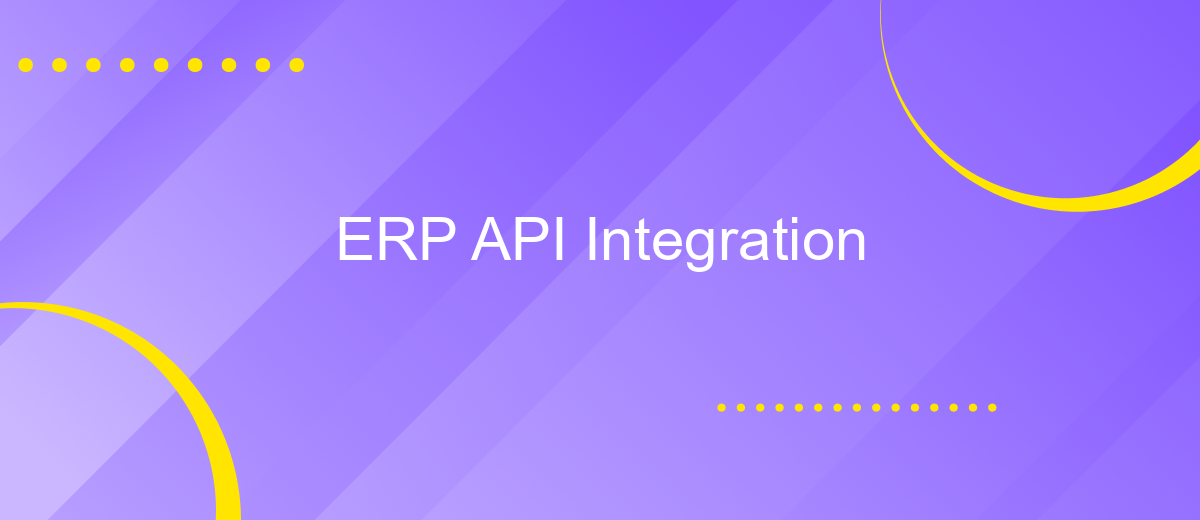ERP API Integration
In today's fast-paced business environment, efficient data management and seamless communication between systems are crucial for success. ERP API integration plays a vital role in connecting enterprise resource planning systems with other software applications, enabling real-time data exchange and automation of business processes. This integration not only enhances operational efficiency but also provides valuable insights, helping organizations make informed decisions and stay competitive in the market.
Understanding ERP API Integration and its Benefits
ERP API integration is a crucial aspect of modern business operations, enabling seamless connectivity between enterprise resource planning (ERP) systems and other software applications. This integration facilitates the automated exchange of data, enhancing efficiency and accuracy in processes such as inventory management, customer relationship management, and financial reporting.
- Improved data accuracy and consistency across systems
- Streamlined business processes and reduced manual intervention
- Enhanced scalability and flexibility for growing businesses
- Real-time data access for better decision-making
- Cost savings through automation and reduced errors
By leveraging ERP API integration, businesses can unlock significant benefits that drive operational excellence and competitive advantage. The ability to connect disparate systems ensures a unified approach to managing business functions, ultimately leading to improved productivity and customer satisfaction. As companies continue to embrace digital transformation, ERP API integration stands out as a vital component in achieving seamless and efficient business operations.
Key Considerations for ERP API Integration

When integrating ERP systems with APIs, it's crucial to first understand the specific needs and workflows of your organization. Identifying the key data points and processes that require synchronization will help in choosing the right APIs and ensuring seamless communication between systems. Security is another critical aspect; ensure that data is encrypted and that the APIs comply with industry standards to protect sensitive information. Additionally, consider the scalability of the integration to accommodate future growth and changes in business processes.
Choosing the right tools for integration can significantly impact the efficiency and success of the process. Services like ApiX-Drive provide user-friendly platforms that facilitate the setup and management of integrations without deep technical expertise. They offer pre-built connectors and automation tools that simplify the API integration process, saving time and resources. Testing the integration thoroughly before full deployment is essential to identify any potential issues and ensure that all systems work harmoniously. Regular monitoring and maintenance will also help in sustaining the integration's effectiveness over time.
Choosing the Right ERP API Integration Method

Choosing the right ERP API integration method is crucial for ensuring seamless data flow and operational efficiency. Different businesses have varying needs, and selecting the appropriate integration approach can significantly impact the success of your ERP implementation. Consider the following factors when making your decision:
- Scalability: Ensure the method can handle your current and future data volume and complexity.
- Compatibility: Verify that the integration method is compatible with both your ERP system and other software applications.
- Security: Choose a method that offers robust security features to protect sensitive business data.
- Cost: Evaluate the total cost of ownership, including implementation, maintenance, and potential upgrades.
- Ease of Use: Opt for a method that is user-friendly and offers comprehensive support and documentation.
By carefully evaluating these factors, businesses can select an ERP API integration method that aligns with their strategic goals and technical requirements. This thoughtful approach ensures not only a successful integration but also a foundation for future growth and innovation.
Implementing and Managing Your ERP API Integration

Implementing an ERP API integration involves a detailed understanding of your business processes and the technical capabilities of your ERP system. Start by identifying the specific functionalities you need from the API, ensuring they align with your business goals. Collaborate with your IT team to evaluate the technical requirements and assess whether your current infrastructure can support the integration.
Once the groundwork is laid, the next step is to design a robust integration strategy. This includes selecting the right API protocols, defining data flows, and setting up authentication mechanisms. It's crucial to ensure that the data exchanged between systems is accurate and secure, minimizing potential disruptions to your operations.
- Define clear objectives and scope for the integration.
- Select appropriate API protocols and standards.
- Ensure data security and compliance with regulations.
- Test the integration thoroughly before full deployment.
Managing your ERP API integration requires ongoing monitoring and optimization. Regularly review the integration performance to identify any bottlenecks or issues. Keep your system updated with the latest patches and improvements to maintain efficiency and security. By proactively managing your integration, you can ensure it continues to meet your evolving business needs.


Best Practices and Future Trends in ERP API Integration
Effective ERP API integration requires adherence to best practices that ensure seamless connectivity and data flow between systems. One key practice is to prioritize security by implementing robust authentication and authorization protocols, safeguarding sensitive business data. Additionally, leveraging standardized APIs can enhance compatibility and reduce integration complexity. Regular monitoring and logging are also crucial for identifying and resolving issues promptly, thus maintaining system reliability. Tools like ApiX-Drive can simplify the integration process by offering user-friendly interfaces and automation capabilities, allowing businesses to connect ERP systems with other applications efficiently.
Looking ahead, the future of ERP API integration is likely to be shaped by emerging technologies and evolving business needs. The rise of AI and machine learning is expected to enhance predictive analytics within ERP systems, providing deeper insights and facilitating data-driven decision-making. Additionally, the growing trend towards cloud-based solutions will drive the demand for more scalable and flexible API integrations. As businesses continue to embrace digital transformation, the ability to seamlessly integrate various systems will remain a critical factor for achieving operational efficiency and competitive advantage.
FAQ
What is ERP API Integration and why is it important?
How can I ensure a successful ERP API Integration?
What are some common challenges in ERP API Integration?
How can I automate processes using ERP API Integration?
What should I consider when choosing an integration platform for ERP API Integration?
Time is the most valuable resource for business today. Almost half of it is wasted on routine tasks. Your employees are constantly forced to perform monotonous tasks that are difficult to classify as important and specialized. You can leave everything as it is by hiring additional employees, or you can automate most of the business processes using the ApiX-Drive online connector to get rid of unnecessary time and money expenses once and for all. The choice is yours!

